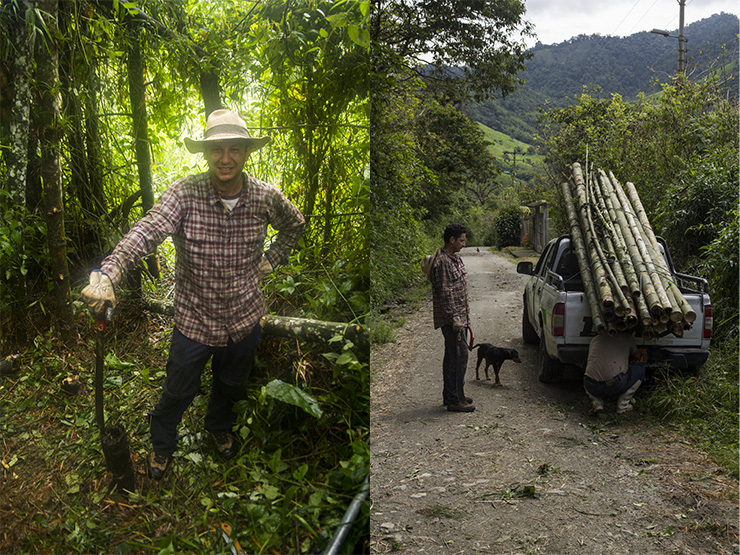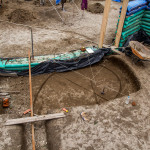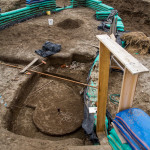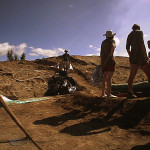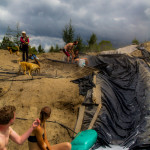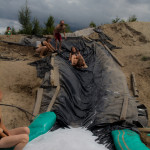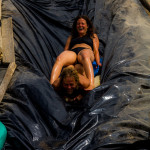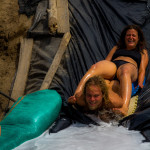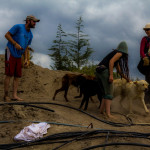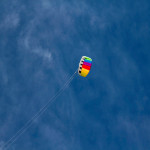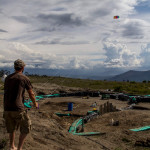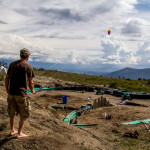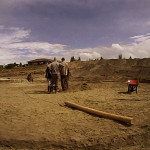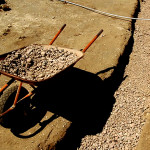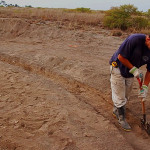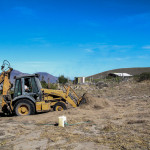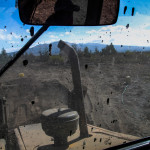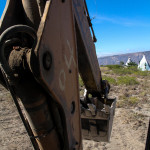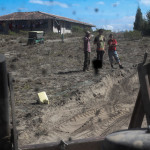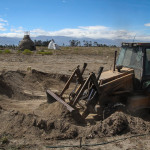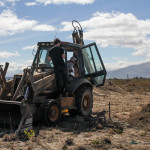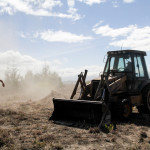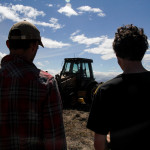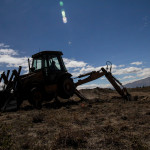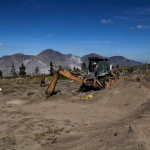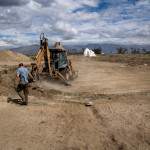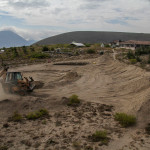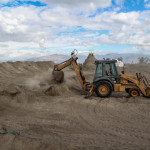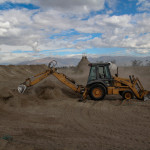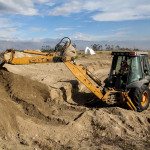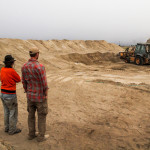
Instead of a traditional buttress we decided to spiral this wall down into the ground, steps will lead to a sunken seating area next to the fire.
En lugar de un contrafuerte tradicional decidimos hacer esta pared en espiral hacia abajo hasta el suelo, escaleras darán lugar a una zona de estar al lado del fuego.

más o menos

Christmas was preceded by a 5 year reunion at the farm, we celebrated by building a slippy slide.

And a little help from James’ kite
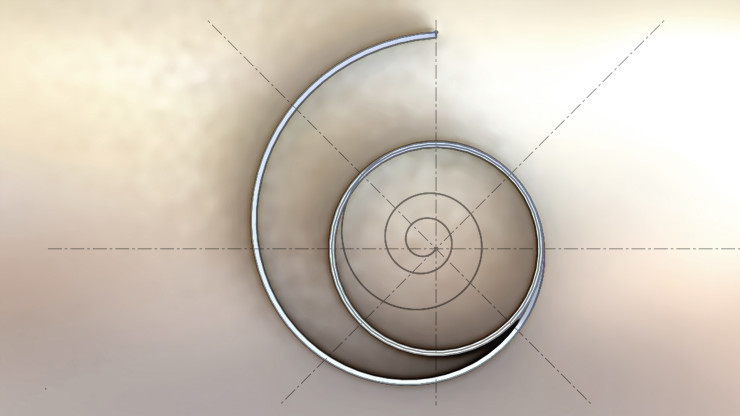
The basic floor plan, yet to be divided into rooms.
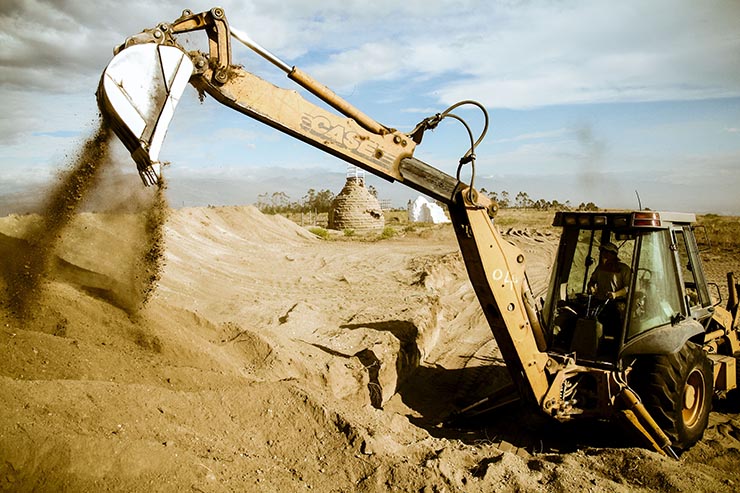
We hired a digger for the day to take a wedge our of the hillside, leaving us with a big hole and enough earth to build all the walls.
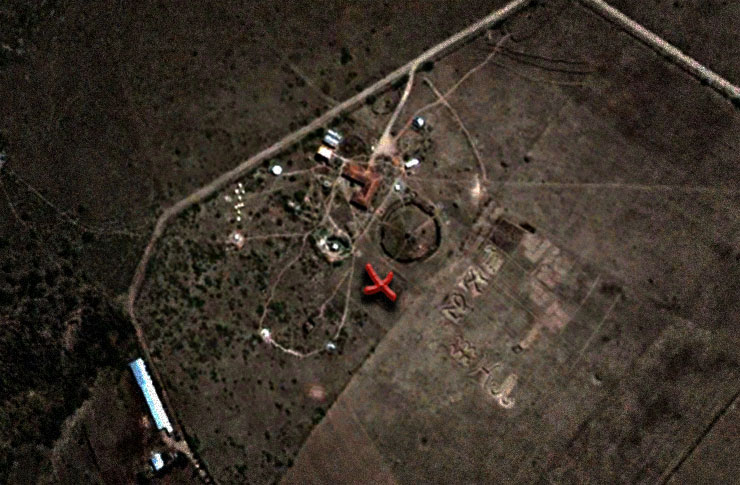
We originally planned to build in the centre of the Pizza Garden (the tree circle) but decided that, due to probable improvements in fertility, it should remain as a garden. Instead we have chosen a spot to the south of the Pizza, next to the Laguna and the Hive. This area has much better access for the inevitable arrival of heavy machinery (gravel deliveries, potential digger hire) and the land isn’t surrounded by trees, so has incredible views of Cayambe to the East and Cotopaxi to the South.
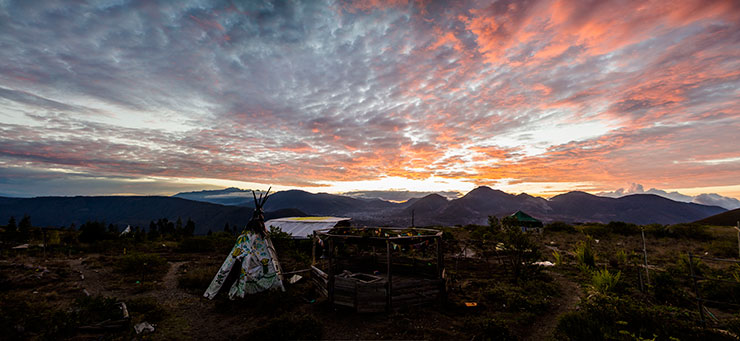
The Rhiannon Community is located in the mountains to the North of Quito, close to the small town of Malchinguí. We are situated right on the Equator at an altitude of approximately 2700 metres.
The seasons here are roughly split between ‘dry and windy’ from May to September and ‘wet’ with moderate rainfall from October to April. The terrain is essentially arid and we experience high levels of exposure to the sun and to the wind.
The soil that we work with is rich in silt and sand with a relatively fine clay below a line of pumice at a depth of approximately 1 metre. Surface vegetation is mostly small shrubs and cacti with some grass.
We live and work in a community which is comprised of volunteers. As such we have a high turnover of community members, with most volunteers staying for an average of one month. Work for volunteers at Rhiannon covers all areas of the community needs and the option to involve volunteers in the project does depend on these needs. Although our core building team remains constant, the fluctuating numbers of volunteers does provide a degree of challenge with regard to the numbers of workers available on any given day, as well as the changing levels of experience and competence.
The community has access to water and runs solar panels to provide some electricity for lighting. The local town of Malchinguí provides for some of our construction needs in the form of hand tools and some building materials. Other items (such as the tube bags) have been sourced from further afield although our aim is to make purchasing as local as possible.
Rhiannon currently has three existing earthbag buildings on site and the collective experience of the construction of these (and the lessons learned from this) provides some foundation of experience to the current project. We are however now working to a much grander scale and this demands perhaps a greater degree of planning and research, using existing external resources. As ‘non-experts’ we are very much reliant on utilising sources of existing knowledge. The organic nature of the earthbag building process does lend itself to innovation however and the opportunities to learn and develop new ideas as we progress are numerous.
La Comunidad de Rhiannon se encuentra en las montañas al norte de Quito, cerca de la pequeña población de Malchinguí. Estamos situados justo en la línea ecuatorial a una altitud de aproximadamente 2,700 metros.
Las estaciones del año aquí están más o menos divididas entre “seco y ventoso”, de mayo a septiembre y “húmedo” con lluvias moderadas a partir de octubre a abril. El terreno es esencialmente árido y experimentamos altos niveles de exposición al sol y al viento.
La tierra con la que trabajamos es rica en limo y arena con una fina capa de arcilla debajo de una línea de piedra pómez a una profundidad de aproximadamente 1 metro. La vegetación de la superficie es en su mayoría pequeños arbustos y cactus con un poco de hierba.
© 2025 Another Bag in the Wall | Theme by Eleven Themes

